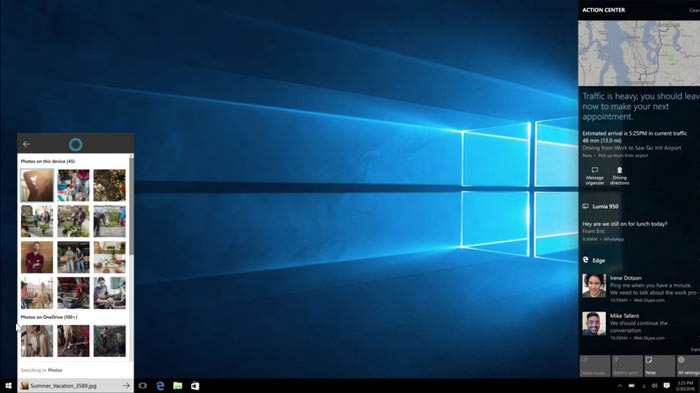
The big update to the Action Center is widgets and tiles, which allow developers to add much more information than ever before. Images, animations and text from a number of new sources can all be leveraged within the panel, allowing for much more detailed data for users, as well as a more engaging look for the whole platform.
Images will also be used to identify where the information is coming from, giving you an idea at a glance, about who has sent you that notification.
Something that will put a smile on the face of many Windows 10 users though, is that the Action Center is set to receive cross platform support, letting you sync up your PC, smartphone and other Windows devices with the cloud. Dismissing a notification on your phone, will dismiss that same notification on your PC and vice versa.
If you don’t have a Windows handset, Winbeta reports that that won’t actually matter. Due to Cortana’s support on Android, you can still use the cross-platform Action Center.
The ‘Cards’ update as it is internally known, isn’t getting its own release, but will show up as part of the Windows 10 Anniversary Update this summer, making the Action Center far more useful for everyone.
This will also mark the near-end of the free upgrade period for older Windows users who still haven’t yet claimed their Windows 10 license. If you haven’t yet, give it some thought. It’ll cost a lot more when August rolls around.
Editors' Recommendations
- Windows 11 vs. Windows 10: finally time to upgrade?
- The best Windows 10 keyboard shortcuts
- PC gamers are flocking to Windows 11, new Steam survey says
- Top 10 Windows shortcuts everyone should know
- After 10 years of headaches, I’m finally a believer in Windows on ARM




